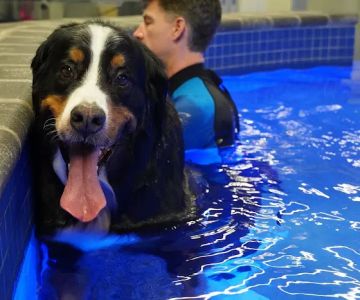Understanding Aggressive Dog Behavior
As a pet owner, one of the most challenging issues you might face is managing a dog with aggressive behavior. Whether your dog is aggressive towards other dogs, strangers, or even family members, it can lead to dangerous situations and a tense environment at home. But the good news is, aggressive behavior can often be managed or corrected with the right approach. One of the most effective ways to address aggression in dogs is through specialized dog training classes tailored to managing aggressive behavior.
What is Aggressive Dog Behavior?
Aggression in dogs can manifest in various forms, including growling, snapping, biting, or displaying dominance. Understanding the root cause of aggression is crucial before attempting to correct it. Aggression can arise from fear, territorial instincts, resource guarding, pain, or lack of proper socialization. In some cases, aggressive behavior is learned or reinforced by past experiences. Identifying the cause of your dog’s aggression is the first step in finding the right training solutions.
Why Aggressive Behavior Needs to Be Addressed
Aggressive behavior in dogs not only puts other animals and people at risk, but it can also damage the bond you share with your dog. Unchecked aggression can lead to stress, fear, and frustration, making your dog’s behavior worse over time. By addressing aggression early on, you help your dog become more confident, relaxed, and well-behaved, which ultimately improves their quality of life and the safety of those around them.
How Dog Training Classes Can Help with Aggressive Behavior
Dog training classes for aggressive behavior are designed to teach you and your dog how to communicate and behave appropriately in various situations. These classes are led by professional trainers who understand canine psychology and behavior modification techniques. Here’s how these classes can help:
1. Understanding the Root Causes of Aggression
In dog training classes, one of the first things trainers will do is assess your dog’s behavior to identify triggers and underlying causes of aggression. Whether it’s fear, anxiety, or poor socialization, understanding why your dog is acting aggressively will guide the training process and help create a more tailored approach.
2. Teaching Proper Socialization
Proper socialization is one of the most important aspects of any dog’s training. Aggressive dogs often lack proper socialization and may feel threatened by new people, animals, or environments. Training classes often provide controlled environments where your dog can learn how to interact with others in a safe and positive way.
3. Using Positive Reinforcement
Modern dog trainers focus on positive reinforcement techniques, which involve rewarding your dog for displaying good behavior. This can include treats, praise, or playtime. Positive reinforcement helps dogs understand what behaviors are desirable and encourages them to repeat those behaviors. Over time, your dog will associate good behavior with positive outcomes, which can reduce aggression.
4. Providing Consistency and Structure
Consistency is key when dealing with aggressive behavior. Dog training classes provide structure and a routine, which are essential for managing aggression. Trainers will guide you on how to establish clear boundaries and reinforce rules at home, ensuring that your dog understands what is expected of them.
5. Building Trust and Communication
Aggressive dogs often act out because they feel uncertain or fearful. Through training, you can build a stronger bond with your dog based on trust and communication. Learning how to read your dog’s body language and responding calmly and consistently will help reduce anxiety and aggression.
What to Expect in Dog Training Classes for Aggressive Behavior
When enrolling in a dog training class for aggressive behavior, it’s essential to find a program that offers personalized attention and focuses on the specific needs of your dog. Here’s what you can expect during these classes:
1. Behavior Assessment
At the beginning of the class, the trainer will conduct a thorough assessment of your dog’s behavior. They’ll observe your dog’s responses to various stimuli and note any signs of aggression. This helps them create a customized plan to address your dog’s specific issues.
2. Basic Obedience Training
In many cases, aggressive dogs have not mastered basic obedience skills. You will start with teaching commands like “sit,” “stay,” and “leave it,” which lay the foundation for more advanced training. Teaching these commands can help you establish control and set clear expectations for your dog.
3. Desensitization and Counter-Conditioning
Desensitization and counter-conditioning are techniques used to reduce aggressive responses to triggers. For example, if your dog reacts aggressively to other dogs, the trainer may expose them to calm, controlled interactions with other dogs in the class. This gradual exposure can help your dog become less reactive over time.
4. Real-Life Scenarios
To ensure that your dog’s training is practical and useful, classes often simulate real-life situations. Trainers may introduce your dog to different people, animals, and environments to see how they react and apply the training strategies in a variety of settings.
5. Owner Education and Support
Training isn’t just about teaching your dog—it’s also about educating you as the owner. Dog training classes will teach you how to reinforce good behavior at home, read your dog’s signals, and address any setbacks. Trainers are there to offer guidance and ongoing support as you continue your dog’s training journey.
Finding the Right Dog Training Class for Aggressive Behavior
Choosing the right dog training class is crucial for managing aggressive behavior effectively. Look for programs that specialize in aggression issues and offer personalized, one-on-one sessions. Research trainers’ qualifications and experience with aggressive dogs, and ensure that their methods align with your values (such as using positive reinforcement over punishment-based techniques).
If you’re dealing with a dog displaying aggressive behavior, don’t wait for the problem to escalate. Start by seeking out professional training to ensure a safer and happier environment for your dog and family. At Hidden Brook Veterinary, we offer expert dog training services and can help guide you through the process of addressing your dog’s behavior issues.











